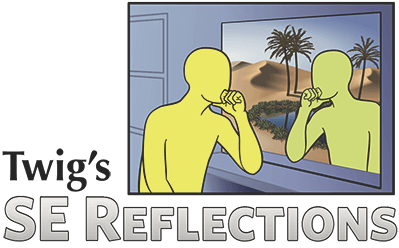“Discovering and facilitating what we CAN DO is far more effective at enhancing resiliency and self-regulation than reinforcing attention on what we CAN’T DO.” -Twig
In my workshop The I CAN PRINCIPLE, I talk about why I believe this statement holds so much weight for SE Practitioners and other helping professionals. I even offer a human ecology based overview of the dynamics behind the drama of so much “I CAN’T” as we find today: in our client’s, society and ourselves. This includes a review of the biology of learned helplessness and it’s associated psychological correlates. I’m also keen on the notion that I CAN’T lives along a continuum of distress punctuated by the “Downward Spiral” at one end and the “Upward Trend” at the other, the later being much easier to achieve with the resolution of accumulated stress caused by incomplete survival instructions of self-protection in the senorimotor and procedural memory systems. A cool part for me in this is making talk like that Fun for participants.
Still, my real focus remains a purely practical one: to encourage a truly creative yet considered approach to titration and structuring our client interactions for spontaneity and success. We can push this sometimes, as in “resiliency testing.” Or by touching the edge so we (or they) get a feeling for the limits of their capacity. Or we might explore extra challenge because we’re trying to find the appropriate level of titration. But by-in-large we’re hoping to *reinforce success* and avoid recapitulating failure and we want to keep that foremost in mind. This includes “taking the hit” when necessary. Meaning, when you get an “I CAN’T” in your office, consider it the result of a miscalculation on your part and reinvest in your commitment to make sure it doesn’t happen again. [Like everything else here, this is a reiterative process for ourselves too. We’ll fail. And then we can go back toward I CAN possibilities and try again.]
Being able to:
- Decisively determine what an I CAN’T looks like
- Deftly redirect attention away from the repeating process of helplessness and failure
- Uncouple our own personal and professional attraction to danger while near the I CAN’T terrain
This is the stuff of practice, education, experience, error correction, flubbing and fumbling with it a time or two […thousand].
So too is:
- Learning to scale interventions and session direction to the point of likely success while still keeping the challenge clinically meaningful (which necessitates some level of challenge, though sometimes that level needs to be very small indeed)
- Internalizing how to build momentum from seemingly inconsequential but potentially successful “entry points” in the process of completing sensory-motor based self-protective responses
- Knowing how much is too much – How much is too little – And how much is just right
Again: Practice, education, experience, error correction, flubbing and fumbling with it a time or two (thousand). And so on…
Still, we’ll never cultivate these skills or access their potential until we first realize – and truly appreciate – that we don’t succeed at the things we’re not ready to do – and neither do our clients.
If we’re repeatedly bumping up against what our client’s CAN’T accomplish, then the challenge is upon us to look for the way to make something else possible – no matter how little the “That-What-Is-Possible” might be. Without some success to help build momentum – change just isn’t going to happen.
It wasn’t always the case for me but I’m now far more interested in discovering what I can do than what I can’t. And I’m interested in that for my clients too.
You can learn more about the I CAN PRINCIPLE workshop here [link returning soon].

